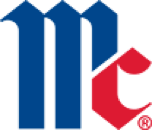McCormick's 1998 Annual Report Smells of Vanilla
The authentic scent of vanilla, however, is as near as a copy of the 1998 Annual Report produced by McCormick & Company, Incorporated. Again this year, McCormick gets readers' attention by producing an Annual Report that "smells." Vanilla is the scent selected to represent the thousands of different products marketed by the international producer of spices, seasonings, flavorings, and specialty foods. Founded in Baltimore in 1889, McCormick is also known as Schilling in the Western United States and as Club House Foods in Canada.
The 1998 Annual Report highlights a superior year for the U. S. Consumer business and the Food Service Group and the creation of a Global Industrial Group. During the year, the Company approved a 6 percent increase in the quarterly cash dividend. McCormick has paid dividends annually since 1925 and has increased dividends 380 percent over the past 10 years.
Allen M. Barrett, Jr., Vice President-Corporate Communications for McCormick, said that the scent of vanilla, created at the Company's R&D Labs, was applied by a Baltimore firm, Schmitz Press, as part of a special printing process. The scent is contained in a varnish-like substance which is rolled over the pages. The Company has attracted attention by using pumpkin pie spice, curry powder, cloves, nutmeg, allspice, Chinese Five Spice, buttered cinnamon flavor, apple pie spice, vanilla butternut flavor, gingerbread, and peppermint to scent annual reports to smell like some of the major products it sells. The "smelly" edition in 1977 was believed to be the first time the process had been used for an annual report.





